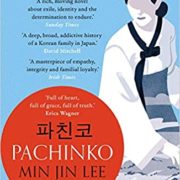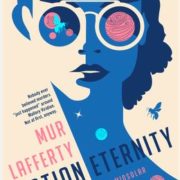Lady Tan’s Circle of Women by Lisa See
The setting for Lisa See’s latest New York Times bestselling novel, LADY TAN’S CIRCLE OF WOMEN, is fifteenth century China. A place where women are encouraged to follow a traditional path, usually one dictated by their father or husband.
Tan Yunxian, the novel’s narrator, is reminded of this by her mother as the book opens. Respectful Lady imparts, “Whether animal or woman, we are a man’s possessions. We women exist to give him heirs and feed, clothe and amuse him. Never forget that.” Her mother offers this advice as she and Yunxian are both trying to manage the pain of footbinding.
Education is usually not part of the path set forth by men for the women in their lives, and the idea is reinforced by Confucius who is quoted as saying, “an educated woman is a worthless woman.” However, Yunxian is different from most women in China. She has led a life of great privilege, thanks to the wealth of her family, and is surrounded by educated people, including her grandmother, who is one of a few female doctors.
Yunxian’s path to medicine starts early, due to her ailing mother. During this time period, male doctors were not allowed to see or touch a female patient. They needed another person, usually the husband, to serve as a go-between, to ask questions and provide the recommended treatment, but when Respectful Lady falls ill, Yunxian is chosen to carry out this task. Despite Yunxian’s attention and care, her mother ultimately succumbs to an infection and the eight year old cannot help but feel like there should have been more she could have done to help.
After her mother’s death Yunxian’s father must depart Laizhou for Beijing to take his next level imperial exams, so she is sent to live at her paternal grandparents’ compound in Wuxi. Medicine has been in her family for generations and both her grandparents are doctors.
After settling in, Yunxian’s grandmother begins to teach her medicine, specifically medicine to help women. Being a female doctor allows Yunxian’s grandmother the opportunity to properly examine women and treat them, unlike how it works for male doctors.
In addition to Confucius teachings not valuing women, midwives are considered less than doctors because they soil their hands with blood during labor and delivery, so it is necessary for a doctor to work closely with a midwife. Yunxian’s grandmother values the help of midwives and works closely with a woman named Midwife Shi. The midwife’s daughter, Meiling, is apprenticing for her, and she and Yunxian become best friends as they help with the medical work.
For seven years, Yunxian learns alongside her grandmother and Midwife Shi. While Yunxian is learning medicine, her bride price is also being negotiated, so at fifteen she marries the son of a wealthy merchant.
After her wedding, Yunxian goes to live with her husband’s family. Her mother-in-law, who is in charge of the household, forbids Yunxian from not only treating women in the compound, but from corresponding and being friends with Meiling. Yunxian is left feeling isolated and alone.
The remainder of the book reflects on the struggle that Yunxian faces in reconciling her education and upbringing with her married life. As the book title suggests, it is only possible due to her “circle of women.”
Lisa See’s newest offering is phenomenal! I love how she based the book on the true story of Tan Yunxian. The characters are well drawn and Yunxian felt like a living, breathing person to me. Not only does See’s research and the history she incorporated shine throughout, but the plot is compelling and relatable. I could not stop reading this novel. Readers will feel like they are part of the Ming dynasty thanks to See’s descriptions of daily life – the food, the culture, the traditions and the scenery. Also, note that Lisa See’s headshot for the book was taken in front of the marriage bed that has been in her family for generations. I highly recommend this one.
Find the book in the catalog.
Review written by: Jeana Gockley, Joplin Public Library Director.











